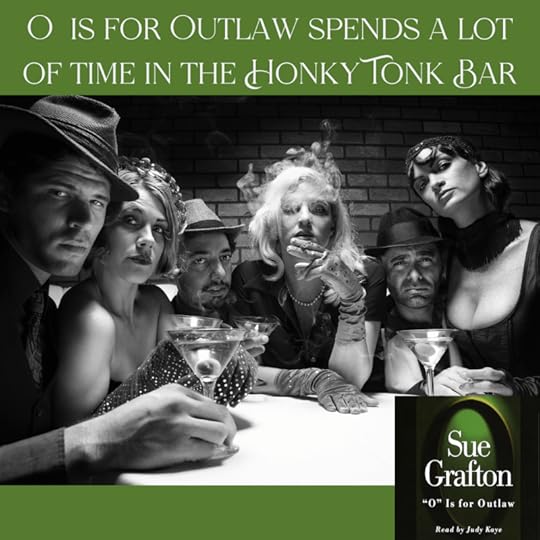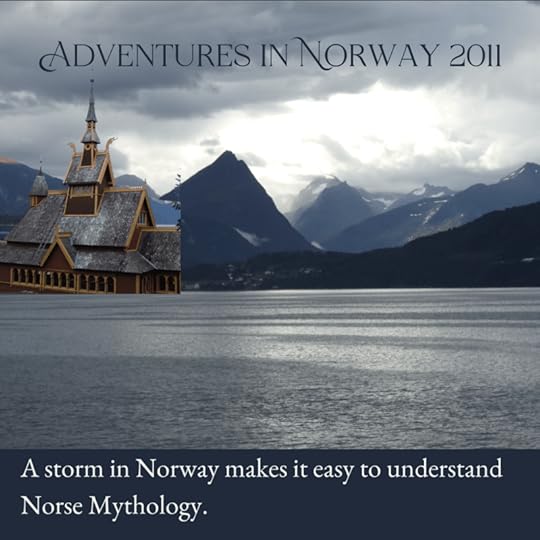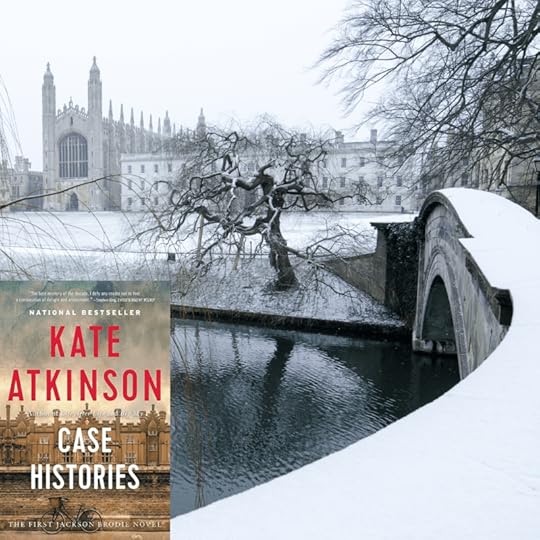Cynthia Sally Haggard's Blog: Cynthia Sally's Blog, page 8
February 12, 2025
THE DUKE’S LAST HUNT by Roseanna E. Lortz ~ A Book Review
Two brother, Rufus the Lord of the Manor, and Henry the penniless younger one, set off hunting one day. Someone shoots Rufus dead, and Henry inherits the title.
In 1100, nobody asked awkward questions about Henry’s motivation. Now that he was Henry I of England, no sensible man would question how he ascended the throne. Besides, his elder brother William II Rufus was a scoundrel, and so mayhap things would be better under King Henry.
In the early 1800s, during the time of Jane Austen, things were not quite so easy for younger brother Henry Rowland. His elder brother Rufus Rowland, the Duke of Brockenhurst has been murdered. Two shots were fired. And how come the front of the Duke’s body is mired with soil that is identical to that found outside the Parish Church, when he is found in a forest clearing?
Bow-Street Runner Jacob Pevensey arrives on the scene to ask awkward questions, and Henry is the prime suspect. If he is found guilty, he will hang.
Thus Roseanna E. Lortz’s Second Pevensy Mystery again takes its inspiration from events that occured in the eleventh century, transposing them to the time of Jane Austen. I loved the character transformation of heroine Eliza Malcolm, who finds her voice by the end of this volume. Her strong-minded mother, weak father, and the two brothers Rowland jump off the page and make this tale extremely convinciing. If you love Regency Romance, you should definitely try this one.
 The post THE DUKE’S LAST HUNT by Roseanna E. Lortz ~ A Book Review appeared first on Cynthia Sally Haggard.
The post THE DUKE’S LAST HUNT by Roseanna E. Lortz ~ A Book Review appeared first on Cynthia Sally Haggard.
February 7, 2025
Adventures in Sicily 2012
It was with a great deal of trepidation that I stepped onto the train at Milano Centrale for the ride south to Sicily. I come from Northern Europe and look it, with my pale skin, blond-ish hair and light eyes. So I knew I was going to stick out like a sore thumb in a place like Sicily. Added to that was the fact that many guide books warned women traveling alone to be wary of Italian men, who, I was told, would take one look at me and conclude that I had come all the way to Sicily to have a romance with them.
The thought made me cringe.
And so I made sure to bring a wardrobe of long skirts, jewel necks and long sleeves.
I hadn’t expected the journey to be so long. I hadn’t expected to have to change trains in Rome from a sleek modern commuter train, to a rackety old-fashioned number, where the only place to put your suitcases was in the rack above the seats. Fortunately, I was sitting in a carriage with a polite young man who helped me.
That was the other thing that bothered me – young men. Last time I was in Italy, I was in my twenties and couldn’t sit on a park bench without being bothered. But by this time, I was old enough to be this young man’s mother, and he treated me with great respect. We fell into a conversation, and because he was so friendly, I confided my worries to him. What did he think of my outfit? Did it look respectable enough? He assured me I looked fine, and that many women in Sicily felt comfortable enough to wear modern clothes.
And that is how my visit turned out to be. The young men I met were universally charming and polite, eager to practice their English on me. The problem that I had was with older Italian men, those around my own age. Even though I claimed to be sessanta (sixty) and the one who was chatting me up said he was only fifty-four, it was a little difficult to get rid of them. But I came to no harm, and have wonderful memories of this jewel of an island.
 The post Adventures in Sicily 2012 appeared first on Cynthia Sally Haggard.
The post Adventures in Sicily 2012 appeared first on Cynthia Sally Haggard.
February 5, 2025
O IS FOR OUTLAW by Sue Grafton ~ A Book Review
One of the things that keeps this series so compelling is the character of Kinsey Milhone. She has such a voice, such a presence on the page, she is hard to forget. And yet, we don’t know much about her.
Over the last 14 books, we’ve heard about her parents’ tragic deaths, Aunt Gin who raised her, the fancy part of her family who live up the coast, and Husband Number Two.
This time, we learn about Husband Number One, the Outlaw of this title.
Author Sue Grafton writes with such empathy about this relationship that began and ended over less than a year when Kinsey was in her early twenties. When she walked out the door, Kinsey hated her ex. But it turns out that she still cares about him, fourteen years later, for when she hears that he has been badly wounded she is extremely upset, more than she would have believed possible.
And so Kinsey sets out to piece together her ex-husband’s life – they haven’t spoken in fourteen years – and finds out that she was wrong about him, in some crucial ways.
If you love Sue Grafton, and especially is you love Kinsey Millhone, you will enjoy this cleverly-told tale. Five Stars.
 The post O IS FOR OUTLAW by Sue Grafton ~ A Book Review appeared first on Cynthia Sally Haggard.
The post O IS FOR OUTLAW by Sue Grafton ~ A Book Review appeared first on Cynthia Sally Haggard.
January 31, 2025
THE HANGING IN THE HOTEL ~ FETHERING #5 ~ by Simon Brett
If you haven’t discovered Simon Brett yet, and you are British or an Anglophile, you really should. For not only does Brett write compelling cozies, but his stories are hilarious send-ups of Britishness.
In this volume, The Hanging in the Hotel (Number 5 of the Fethering Mysteries), Jude is forced to dress up as an Edwardian maid-servant, complete with a rather anachronistic mob cap (fashionable in the 18th-century rather than the 19th century) to help out best friend Susie, who owns a posh hotel called The Hopwicke Country House Hotel. Naturally, Jude finds a body, this time of a young man who is hung from a four-poster bed. Rather too quickly, everyone assumes that he has committed suicide. And by everyone I mean the police, the staff at the hotel and the members of the rather phallic-sounding Pillars of Sussex, an all-male group who justify their existence by their charitable works, when their real purpose is to drink way too much and tell off-color jokes about women.
And so Jude is suspicious. It all seems too convenient. And so she enlists the help of next-door neighbor Carole Seddon, an overly-fussy and rather rigid retiree, who used to work for the Home Office. Carole’s son Stephen is finally getting married and (gasp!) Carole discovers that she actually likes her son’s fiancée. The two women persist in their efforts, which include Carole indulging in a rather out-of-character flirtation with a local solicitor, all to extract information from him about the murder of the poor young man.
With glimpses into the lives of the extremely wealthy during the time of Tony Blair’s New Labour, and hilarious character-sketches of the kind of “womenfolk” who marry powerful men, this is yet another novel of manners, which draws a scathing portrait of the too-wealthy, too-smug and too-pretentious.
 The post THE HANGING IN THE HOTEL ~ FETHERING #5 ~ by Simon Brett appeared first on Cynthia Sally Haggard.
The post THE HANGING IN THE HOTEL ~ FETHERING #5 ~ by Simon Brett appeared first on Cynthia Sally Haggard.
January 29, 2025
Adventures in the Lake District 2012
Shortly before my mother’s final illness, I went to spend Christmas with her and my sister in the North of England. To celebrate, my sister found a hotel for us to stay in the Lake District for a few nights.
The Lake District in winter is magical. That particular winter gave us a dusting of snow which showed off the beauty of the surrounding countryside. The whiteness of the snow etched in details of tree limbs, hummocky grass and the edges of the water. I cannot now remember exactly where we stayed, but it was one of those English Mansions-turned-hotel. Our room had a lovely view over the lake.
I’ve always remembered that holiday as it was the last time Mum was able to enjoy herself.
 The post Adventures in the Lake District 2012 appeared first on Cynthia Sally Haggard.
The post Adventures in the Lake District 2012 appeared first on Cynthia Sally Haggard.
January 25, 2025
THE LOOKING-GLASS WAR by John Le Carré ~ A Book Review
Although this novel is a masterpiece, it is not something you want to read unless you can handle something very dark.
Apparently John Le Carré was taken aback by the positive reception to his previous novel, The Spy that Came in from the Cold. He was dismayed that so many of his readers were devouring his in the mistaken belief that the Life of a Spy is glamorous and sexy. And so The Looking Glass War is his attempt to set the record straight, portraying a spy agency as morally bankrupt and incompetent.) (Which raises an interesting question ~ how on earth did he get this novel past the censors?)
In the early 1960s, British Intelligence is trying to get a beat on what is going on in East Germany. In particular, they are interested in whether the USSR is sending its soldiers into East Germany for training purposes, and if so, what matérial they are using in the shape of guns, tanks and other instruments of warfare.
And so they send Taylor to Berlin. This spy travels alone into dangerous territory, gets drunk at a bar while waiting for a commercial plane to arrive (it is late because it is doing a spot of surveillance for the British) and then, as he walks alone through a snowstorm to get to his lodgings and begin his work, he gets mown down by a car. Of course he leaves a wife and a young child. But Control (the chief spy) and The Circus (the spy agency, probably MI6) don’t seem interested in trying to find out who murdered him and why.
Avery is next. HIs task is to retrieve the photos of the surveillance and bring the body home. Pretending to be Taylor’s half-brother, his act is so unconvincing that the person in charge of releasing Taylor’s body laughs at him. The only good thing that happens to emerge from this disastrous mess is that Avery manages to return home to his wife and child. But the photos have disappeared. And Taylor’s body has to be rescued by Control because Avery had the wrong passport.
Then there is Fred Leiser, a Polish immigrant, who supposedly was a top-notch sender and receiver of morse code messages during the Second World War, which ended 20 years prior to the date of this novel. Wouldn’t it be just the ticket, think the heads of the spy agency, to send him to Berlin to continue Taylor’s work? But Leiser (his name sounds exactly like Liza, which gives him a confusing feminine identity if you are experiencing this as an audio book), is all-too-happy to help this mismatched bunch of mostly middle-aged men, who drink far too much and breathtakingly careless with other people’s lives.
Despite his reputation, Fred Leiser is incompetent from the word go. He can’t fire his pistol properly. He gets mixed up when instructed to do something. And his morse code work is far too slow. Nevertheless, LeClerc and the others in charge tell him he is doing excellent stuff and that he is the best to do the job.
Of course, it all ends in heartbreaking disaster. Of course Leiser is caught. Of course he is going to be tried and executed. Meanwhile LeClerc, Avery and the rest of the spy agency bolt back to England, leaving Leiser to face the executioner, while they clap each other on the back for the supposedly terrific work they’ve done. And then, they pass the port.
 The post THE LOOKING-GLASS WAR by John Le Carré ~ A Book Review appeared first on Cynthia Sally Haggard.
The post THE LOOKING-GLASS WAR by John Le Carré ~ A Book Review appeared first on Cynthia Sally Haggard.
January 22, 2025
Disease D
People can sometimes be so strange.
I once knew a man who specialized in probabilities. He was especially interested in the background probabilities of certain phenomena, such as the background probability of getting a rare disease versus a much more common disease.
He was an expert on such matters.
And yet, when it came to his own health, he totally failed to put any of his expertise to work.
He had an internist that he really trusted, so when this doctor told him that he had a rare disease – let’s call it Disease D – he believed him. Despite the fact that he had not one, but two brothers-in-law who were doctors, despite his wife’s pleading and begging, he refused to get a second opinion.
On his doctor’s instructions, he had his spleen removed. This was because the doctor told my friend that it was the best way of treating Disease D.
My friend complied.
Now, as most of you know, the spleen is part of the immune system. You really don’t want to remove a perfectly healthy spleen unless you have a very good reason to do so. Again, my friend refused to get a second opinion before the operation was performed.
Unfortunately, my friend got sicker and sicker. Finally, he did go to see another doctor, who informed him that he had leukemia.
Of course, it was too late to do anything about it, and my friend died.
It was a tragedy for himself and his family.
I’ve never forgotten his untimely death, because it was so preventable.
Why would a person with his expertise not use it to help himself?
People can sometimes be so strange.
 The post Disease D appeared first on Cynthia Sally Haggard.
The post Disease D appeared first on Cynthia Sally Haggard.
January 18, 2025
SUSAN by Alice McVeigh ~ A Book Review
How I loved Susan! In Alice McVeigh’s deft hands, she jumps of the pages and makes the novel glow in reflected glory.
When Jane Austen was in her late teens, she wrote a novel called LADY SUSAN, about a cold mother and her mistreated daughter. In the original novel, Lady Susan is 35 years old and she possesses a 16-year-old daughter, Frederica. Rather cruelly, she is determined to marry off her shy flower of a daughter to an unscrupulous gentleman several years her senior. But Frederica finds help, and in the end, Lady Susan marries the cad instead.
Roll backwards 19 years, and we have 16-year-old Susan Smithson, a young woman of great gentility and beauty, but no money to speak of. (Does this sound familiar?) But Susan possesses the great gift of reading people, and because the men hold all the cards in early 19th-century England, Susan becomes adept at using her charms and her intelligence to flatter the male ego (and Lady Catherine de Bough) for her own ends.
So what does Susan want? She wants London with all its balls, parties and opportunities for flirtation. But other women take an instant dislike to her and spread gossip. And so poor Susan spends a great deal of time immured in the society of Hunsford in the County of Kent, at the beck and call of Lady Catherine.
Susan may sound cold and manipulative, but that is not true. The genius of her character is that she is kind-hearted and a loyal friend. Some of her ploys are not for herself at all, but for her best friend (and cousin) Alicia Collins.
If you want to curl up by the fire on these chilly winter days, you could do worse than to immerse yourself in this novel.
 The post SUSAN by Alice McVeigh ~ A Book Review appeared first on Cynthia Sally Haggard.
The post SUSAN by Alice McVeigh ~ A Book Review appeared first on Cynthia Sally Haggard.
January 15, 2025
Adventures in Norway in 2011
In 2011, my husband and I went to Norway for the first time, and discovered a magical land. Once you are out in the countryside, you literally cannot walk more than 100 yards before meeting a waterfall.
One surprising thing about Norway is that it is strangely reminiscent of the United States. If you look at a map you will notice that the country is bisected by a range of mountains. That means that if you take the train from Oslo to Bergen (highly recommended) you are obliged to climb up a steep mountain range, all the way up to 1,222 meters or 4,000 feet, and come down again, as Bergen is at sea level. The fact that you have such high mountains (the highest peaks go up to 2469 meters or 8,000 feet) means that parts of Norway are cut off. It doesn’t help that there are various glaciers blocking any travel. So in some parts of Norway, you really are in the back of beyond, just as you are in parts of Wyoming, Nebraska, Colorado and many many places in the interior US.
Of course, if you visit you should look out for the Viking Ships, which you can find in the Viking Ship Museum in Oslo. Then there are the Stave churches dotted all around, with their sinuous carvings. If you only have time to visit Oslo, you should make your way to Bygdoy Park, an outdoors museum of Norwegian history.
But my husband and I found the countryside so compelling. We found ourselves somewhere (cant’ remember the name) with a thunderstorm going on, and it was so easy to imagine Thor with his hammer, and the other Norse gods battling each other as the lightning flared against lowering clouds.
 The post Adventures in Norway in 2011 appeared first on Cynthia Sally Haggard.
The post Adventures in Norway in 2011 appeared first on Cynthia Sally Haggard.
January 10, 2025
CASE HISTORIES by Kate Atkinson ~ A Book Review
British writers are not the same as American writers. I know this is an obvious statement, but American readers who pick up Kate Atkinson’s CASE HISTORIES, the first in a series of six novels featuring PI Jackson Brodie, should be warned that this novel goes at a far slower clip, than its American cousin.
Set in 2004, CASE HISTORIES is about three cold cases that Jackson Brodie is investigating. The way this novel is structured, Ms. Atkinson introduces each one at the beginning of the novel.
Chapter 1 ~ Family Plot, set in 1970, introduces the story of missing three-year-old Olivia Land, who disappeared one night from a tent in the back garden and is never seen again.
Chapter 2 ~ Just a Normal Day, set in 1994, is about the horrific murder of a young woman who is temping in her father’s office.
Chapter 3 ~ Everything from Duty, Nothing from Love, set in 1979, is about an overwhelmed young mother and what happens when she explodes.
After that, each chapter tells the story from a characters’s point of view, with the title listing the name ~ Jackson, Amelia, Theo and so on until the very end of the novel. What this means for the reader is that they are expected to do the hard work of remembering each of these stories, as well as each character throughout the rest of this novel.
In my opinion, it would have been much better to have the book divided into three parts, with the details of each case plus Jackson Brodie’s response to them put into each part so that the reader has more time with these people before switching to the next case. Of course, the author would not want to give the endings away until the end, but that kind of structure would make it much easier for the reader to keep track of what is going on.
As I said above, this novel goes at a far slower clip than the typical US murder mystery. Again, I think this is a problem, and I really believe this book would have benefitted from both a faster pace and some trimming. I really don’t think we needed to spend quite so much time with sisters Julia and Amelia and their tiresome squabbles, which bogged down the action.
So I can only give a qualified recommendation for this one. If you are British, or an Anglophile American, you might enjoy this piece. Otherwise, I think you should give it a miss.
 The post CASE HISTORIES by Kate Atkinson ~ A Book Review appeared first on Cynthia Sally Haggard.
The post CASE HISTORIES by Kate Atkinson ~ A Book Review appeared first on Cynthia Sally Haggard.
Cynthia Sally's Blog
- Cynthia Sally Haggard's profile
- 129 followers



